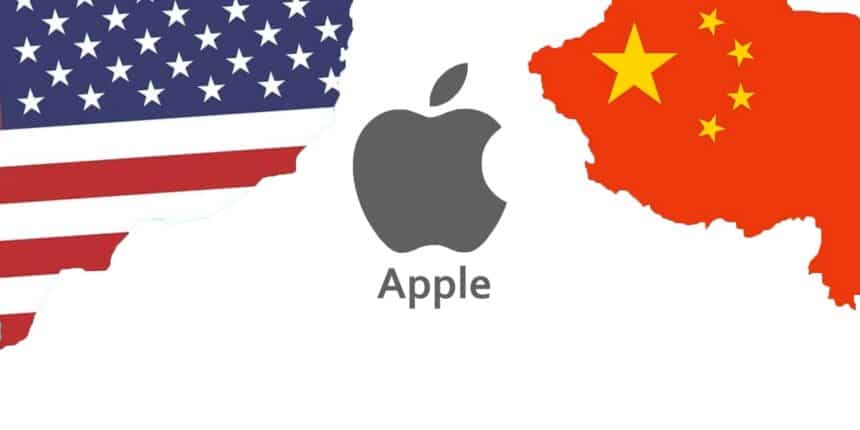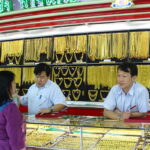BEIJING – Apple, the world’s most valuable company, faces fresh hurdles as it tries to expand production in India. The iPhone giant hopes to move some of its manufacturing out of China. But competing interests from US President Donald Trump and Chinese President Xi Jinping are making that move difficult.
Bloomberg’s piece, “Apple Can’t Leave China, With or Without Tariffs”, highlights how Apple’s long history in China has built a supply chain it can’t easily replace. As Apple begins shifting work to India, pressure from both Washington and Beijing could derail its efforts and impact its business worldwide.
Apple’s links to China run deep. Over twenty years, the company set up a vast supply chain there, with thousands of suppliers and millions of workers. The centrepiece is Foxconn’s huge “iPhone City” in Zhengzhou. Patrick McGee’s book, “Apple in China”, referenced by Bloomberg, explains how Apple brought tech skills and know-how to Chinese firms, which boosted Xi’s “Made in China 2025” campaign.
This move helped China become a leader in tech manufacturing, but it’s also put Apple under Beijing’s thumb.
Apple has spent years following China’s strict rules, even limiting functions like Bluetooth and AirDrop to block protests. Now, the company faces a tough choice. Xi’s government fears losing control over foreign companies and could hit back if Apple moves too fast.
Apple in China’s Market
Reuters reported that China’s commerce minister recently reminded Apple CEO Tim Cook that China welcomes Apple’s presence—a clear hint that Beijing holds some cards. If Apple pulls out too quickly, it risks upsetting local officials and losing access to a Chinese market that makes up nearly a fifth of its earnings.
Trump’s policies have added more stress. In his first term, he pressured Apple to build products in the US, taking credit for a Texas factory that was already running. McGee describes this as a “fiasco”, where Chinese workers had to fix problems at the US site.
In his second term, Trump raised tariffs on Chinese goods to 20% and even floated a 125% tax on electronics, before granting exemptions for iPhones and iPads in April 2025. These exemptions gave Apple a little breathing room, but the company still expects tariffs to cost $900 million this quarter.
Apple’s shift to India aims to soften the blow. The company wants to make 60 million iPhones a year in India for the US by 2026. Production with partners like Foxconn and Tata has already grown, with $2 billion worth of iPhones shipped to the US in March alone.
But Trump’s tariffs target more than just China. The US now hits Indian-made goods with a 26% duty and Vietnamese ones with 46%, which complicates Apple’s plan to spread out manufacturing.
Bloomberg points out that moving to other Asian countries is no quick fix when they also face heavy tariffs. Wedbush analyst Dan Ives says moving just 10% of Apple’s supply chain to the US would take three years and cost $30 billion, while causing major disruption.
Hurdle in India
India brings its own set of hurdles. Apple now runs three plants in the country and has boosted output, even adding Sunday shifts at Foxconn’s Chennai site. But building an ecosystem like China’s is tough. China’s years of investment in factories, skilled staff, and suppliers can’t be copied overnight.
Supply chain expert Lin Xueping notes how Apple helped Chinese businesses like Beijing Jingdiao become global players, something India can’t match yet. Posts on X from users such as @catcheronthesly point out how Apple and Foxconn are learning the hard way that recreating China’s system in India is a massive task.
Xi is tightening his grip. ABC News reports that he’s preparing China to weather Trump’s tariffs, betting the US will step back first. By limiting Hollywood films and stalling trade talks, Beijing is showing its economic power, which could include pressing Apple to keep its Chinese operations intact. If Apple pushes too hard to relocate, China could respond with export bans or stricter controls, putting Apple’s India expansion at risk.
Trump’s tariff plans
Tim Cook is treading carefully. He has met Chinese officials, visited suppliers, and even praised Trump on X to keep both sides happy. In 2019, Cook managed to get tariff exemptions, and he may try to use his relationship with Trump again.
But US policy remains unpredictable. Business Insider quoted analyst Jamie MacEwan, who said Apple will need “a huge amount of public diplomacy” to manage these political risks.
The stakes are high. Apple’s market value dropped by $770 billion in four days after Trump’s tariff plans came out in April, though it later regained some ground. The company’s quarterly profit of $24.78 billion, thanks to strong app and service sales, shows it can handle shocks. Still, its deep ties to China leave it exposed.
Bloomberg sums it up: Apple can move some work to India and Vietnam, but leaving China now isn’t possible. With Xi tightening control and Trump ramping up tariffs, Apple’s push into India faces a tough path.
For now, Apple is building up iPhone stock in the US to soften the effects of tariffs and is speeding up production in India. But with Xi’s influence in China and Trump’s unpredictable trade moves, Apple’s plans hang in the balance.
The company’s success in managing these risks will shape whether it can safely reduce its dependence on China and protect its place at the top.














